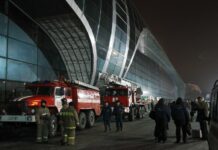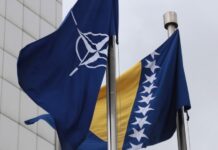US State Department’s 10th Annual Trafficking In Persons Report
{gallery}newsletters/6/2{/gallery}The 10th anniversary edition of the US State Department’s Annual Trafficking In Persons Report marks a milestone for Bosnia and Herzegovina, where years of struggle have earned the country the Report’s highest placement: Tier 1 designation. It is a considerable honor; of 177 states analyzed this year, only 30 achieved this standing.
In 2000 the first annual Trafficking in Persons (TIP) Report was published by the U.S. State Department, a pioneering assessment of the commitment and efforts of individual states in confronting human trafficking—the pervasive form of slavery in the modern world. In the decade since it was introduced, the TIP Report has become one of the most prominent standards of counter trafficking research tools.
A Milestone
This tenth anniversary is a shared victory, significant not only for all the agencies and actors committed to the report within the United States of America, but also for the international counter human-trafficking community, whose combined efforts have contributed critical research and details for the report each year—information not gained without risks.
The 10th anniversary edition also marks a milestone for Bosnia and Herzegovina, where years of struggle have earned the country the TIP Report’s highest placement: Tier 1 designation. It is a considerable honor; of 177 states analyzed this year, only 30 achieved this standing. This is especially significant given the fact that in the post conflict years, the country was used by external and internal crime syndicates as a transit hub for trafficked women. When the TIP report was first published, Bosnia was Tier 3, the most critical placement on the TIP Report, indicative of a situation that had reached crisis proportions. Of all the nations that were in Tier 3 status in the first TIP Report, only South Korea has achieved Bosnia and Herzegovina’s dramatic success.
Bosnia and Herzegovina has not only enacted careful and effective laws to deal with the issue, but has also adhered to strict investigation guidelines, and done its best to protect and aid those victimized by traffickers to improved circumstances after their freedom has been initially secured. This last point is not to be understated—as many nations still summarily deport trafficking victims back to their home countries with little or no support. This lack of support leaves those freed from slavery at high risk of falling back into the hands of their traffickers, and vulnerable to violent retaliation if it is believed that they have cooperated with authorities.
Bosnia and Herzegovina’s success demonstrates its dedication to principles of social justice, considerable human capacity capital, and a willingness and ability to meet international standards. Tier 1 status on the TIP report specifically brings Bosnia and Herzegovina, a candidate nation for NATO membership, to the forefront of the human trafficking goals NATO officially established in June of 2004. Not all standing members of the alliance have been able to achieve such a level of success. Of the Balkan and Southeastern European states in general, existing in the midst of transit corridors for illegal goods between Asia and Europe, only Slovenia and Croatia join with Bosnia and Herzegovina in TIP Report Tier 1 status. Indeed, NATO itself specifically noted the difficult position of South Eastern Europe in the preamble to its counter human trafficking policy in 2004.
Bosnian victims
Underscoring this is the human trafficking shift, from destination to source, that has occurred in BiH. While Bosnia and Herzegovina has successfully met the challenges of ending many of the trafficking routes that brought enslaved women into the country, its own citizens are now increasingly been targeted by traffickers. In 2010 nearly 500 men, mostly of Bosnian Serb background, were found in forced labor in the construction industry in Azerbaijan. The primary victims, however, have been young Bosnian women and girls seeking work or travel to Europe. Misled by false agencies and offers, they are instead forced into sex or sex related slavery in Croatia and Western Europe.
Thus, despite the success of Bosnia and Herzegovina’s efforts, the country cannot rest on its laurels. Trafficking networks adapt and change their operations, and other countries that have been Tier 1 in the past have lost standing in recent years. The United States of America’s State Department notes that:
“While Tier 1 is the highest ranking, it does not mean that a country has no human trafficking problem… Each year, governments need to demonstrate appreciable progress in combating trafficking to maintain a Tier 1 ranking. Indeed, Tier 1 represents a responsibility rather than a reprieve.”
Sean BARBEZAT
Photo by AI
Resources and Further Reading:
– Trafficking in Persons Report, 10th Edition. June 2010, United States of America, Department of State. (full report, in English.)
– NATO Policy On Combating Trafficking In Human Beings, 29 June 2004.
– OSCE: Human Trafficking in BiH







